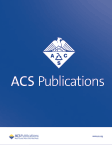摘要PO2-01-10:21基因复发评分指数(ONCOTYPE DX)作为HR+HER2-乳腺癌患者新辅助化疗反应和预后的预测性生物标志物
IF 3.4
Q2 PUBLIC, ENVIRONMENTAL & OCCUPATIONAL HEALTH
引用次数: 0
摘要
背景:与其他临床病理亚型相比,激素受体阳性(HR+)、HER2- 早期乳腺癌(EBC)对新辅助化疗(NCT)的反应较低。ONCOTYPE DX 可能有助于为 EBC 的全身治疗决策提供依据,并预测病理完全反应(pCR)或化疗敏感性的可能性。我们根据 ONCOTYPE RS 分析病理反应及其预后价值。方法我们连续纳入了 139 例具有高临床风险因素并符合接受 NCT 标准的患者,这些患者在开始接受 NCT 之前都进行过 ONCOTYPE DX 检测。中位年龄为 51 岁,其中 65 名患者(47%)小于 50 岁。初始肿瘤大小中位数为 25 毫米(9-97),T1:35%,T2:51%,T3:14%。70名患者(50%)初次腋窝结节受累。ONCOTYPE DX评分中位数为29(12 - 76),36%的患者RS小于25,54%的患者RS小于30。35名患者(25%)出现了完全病理反应(pCR),RCB为RCB:0为23%,RCB-1为18%,RCB-2为24%,RCB-3为34%。结果:pCR评分与ONCOTYPE DX相关(pearson:p:0,001),ONCOTYPE RS评分高于30分的患者中,pCR的总比例为37%,而ONCOTYPE RS评分低于30分的患者中,pCR的总比例为14%。中位随访时间为 32 个月(5 - 100)。不同 ONCOTYPE RS 评分的复发率相似(12% < 30;15% >30),但 ONCOTYPE RS 评分 < 30 并获得 pCR 的患者比未获得 pCR 的患者预后更好(0% vs 14%)。ONCOTYPE RS > 30 的肿瘤患者获得 pCR 的复发率为 8%,而未获得 pCR 的患者的复发率为 20%。结论这些数据表明,ONCOTYPE DX可预测HR+HER2- BC患者的pCR,尤其是RS大于30的患者,其pCR率高达37%。ONCOTYPE DX 小于 30 但获得 pCR 的患者预后较好,而 ONCOTYPE DX 大于 30 但未获得 pCR 的患者预后最差,复发率高达 20%。ONCOTYPE DX预测了获得pCR的可能性,而ONCOTYPE DX RS评分高且有残留疾病的患者尽管接受了化疗,但复发率仍很高,这就需要更好的辅助治疗,可能使用CDK 4/6细胞周期蛋白抑制剂。引用格式:Ariadna Gasol Cudós、Serafin Morales Murillo、Noemí Tuset Der-Abrain、Felip Vilardell Villellas、Laura Arbones Cid、Jordi Melé Olivé、Carles Canosa Morales。21基因复发评分指数(ONCOTYPE DX)作为HR+HER2-乳腺癌患者新辅助化疗反应和疗效的预测性生物标志物[摘要]。在:2023 年圣安东尼奥乳腺癌研讨会论文集;2023 年 12 月 5-9 日;德克萨斯州圣安东尼奥。费城(宾夕法尼亚州):AACR; Cancer Res 2024;84(9 Suppl):Abstract nr PO2-01-10.本文章由计算机程序翻译,如有差异,请以英文原文为准。
Abstract PO2-01-10: 21-Gene Recurrence Score Index (ONCOTYPE DX) as a predictive biomarker for neoadjuvant chemotherapy response and outcome in patients with HR+HER2- breast cancer
Background: Hormone receptor positive (HR+), HER2- early stage breast cancer (EBC) has shown lower response to neoadjuvant chemotherapy (NCT) compared with other clinicopathologic subtypes. ONCOTYPE DX may help inform systemic treatment decisions for EBC and predicting likelihood of pathological complete response (pCR) or chemosensitivity. We analyze the pathologic response according ONCOTYPE RS and their prognostic value.
Methods: We included a serie of 139 consecutive patients with high clinical risk factor with criteria to received NCT than have performed an ONCOTYPE DX test previous to start NCT. The median age was 51 years with 65 patients (47%) less than 50 years. Median initial tumoral size was 25 mm (9-97), T1: 35%, T2: 51% and T3: 14%. 70 patients (50%) have initial axillary node involvement. Median ONCOTYPE DX score was 29 (12 – 76) , RS < 25 in 36% and RS < 30 in 54%. Complete pathologic response (pCR) was found in 35 patients (25%), and by RCB was: RCB:0 23%, RCB-1 18%, RCB-2 24% and RCB-3 34%.
Results: pCR score was correlated with ONCOTYPE DX (pearson : p:0,001) , patients with ONCOTYPE RS score superior to 30 has a total of 37% of pCR in contrast to a 14% in patients with ONCOTYPE RS score less than 30. Median follow-up was 32 months (5 -100). The rate of recurrence was similar independently the ONCOTYPE RS score (12% < 30 ; 15% >30) , but patients with ONCOTYPE RS < 30 with achieve pCR had better prognostic compared to patients that not achieve pCR (0% vs 14%). Patients with ONCOTYPE RS > 30 tumors that had a pCR the recurrence rate was 8% compared to 20% in patients with non pCR.
Conclusions: These data suggest ONCOTYPE DX predicts pCR in HR+HER2- BC patients, especially in patients with a RS superior to 30 with an high rate of pCR of 37%. Patients with ONCOTYPE DX less than 30 that achieved pCR had the better outcomes and patients with ONCOTYPE DX superior to 30 that not achieved pCR had the worst outcomes with a total of 20% of recurrence. ONCOTYPE DX predicts the possibility of achieve a pCR and patients with a high ONCOTYPE DX RS score with residual disease have a high recurrence despite receiving treatment with chemotherapy, which requires a better adjuvant treatment, possibly with CDK 4/6 cyclin inhibitors.
Citation Format: Ariadna Gasol Cudós, Serafin Morales Murillo, Noemí Tuset Der-Abrain, Felip Vilardell Villellas, Laura Arbones Cid, Jordi Melé Olivé, Carles Canosa Morales. 21-Gene Recurrence Score Index (ONCOTYPE DX) as a predictive biomarker for neoadjuvant chemotherapy response and outcome in patients with HR+HER2- breast cancer [abstract]. In: Proceedings of the 2023 San Antonio Breast Cancer Symposium; 2023 Dec 5-9; San Antonio, TX. Philadelphia (PA): AACR; Cancer Res 2024;84(9 Suppl):Abstract nr PO2-01-10.
求助全文
通过发布文献求助,成功后即可免费获取论文全文。
去求助
来源期刊

ACS Chemical Health & Safety
PUBLIC, ENVIRONMENTAL & OCCUPATIONAL HEALTH-
CiteScore
3.10
自引率
20.00%
发文量
63
期刊介绍:
The Journal of Chemical Health and Safety focuses on news, information, and ideas relating to issues and advances in chemical health and safety. The Journal of Chemical Health and Safety covers up-to-the minute, in-depth views of safety issues ranging from OSHA and EPA regulations to the safe handling of hazardous waste, from the latest innovations in effective chemical hygiene practices to the courts'' most recent rulings on safety-related lawsuits. The Journal of Chemical Health and Safety presents real-world information that health, safety and environmental professionals and others responsible for the safety of their workplaces can put to use right away, identifying potential and developing safety concerns before they do real harm.
 求助内容:
求助内容: 应助结果提醒方式:
应助结果提醒方式:


